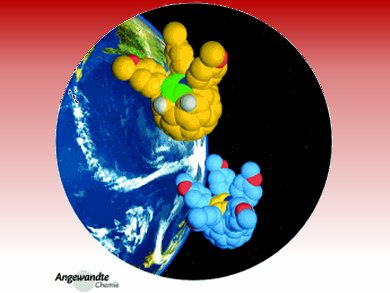In this issue’s Review, Z.-L. Wang and W. Wu discuss nanotechnology-enabled energy harvesting for self-powered micro- and nanosystems. How can such systems be applied to health, infrastructure, and environmental monitoring? In a Minireview, K. A. Scheidt et al. summarize catalysis with N-heterocyclic carbenes in total syntheses. The challenges for academic drug discovery are debated by W. L. Jorgensen in an Essay. The Highlights deal with artificial water channels (M. Barboiu) and meta-selective directed functionalization of C–H bonds (T. Truong, O. Daugulis). In an Editorial, B. C. Gates and T. J. Marks call for the defragmentation of catalysis.
In the Communications section, A. Hirsch et al. present pentaazafullerenes and their precursors (see picture). I. Hermans et al. succeeded in a simple and scalable precipitation of highly active Lewis acidic Sn-β zeolite. M. Murakami et al. describe the solar-driven incorporation of CO2 into α-amino ketones. R. J. Linhardt et al. show how to detect tiny amounts of carbohydrates quantitatively in real time by conjugating them with DNA markers.




